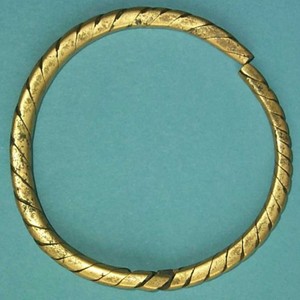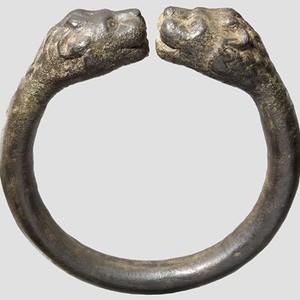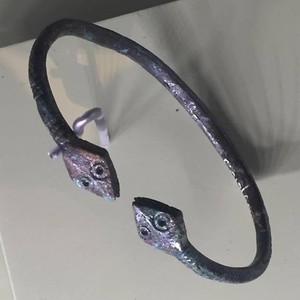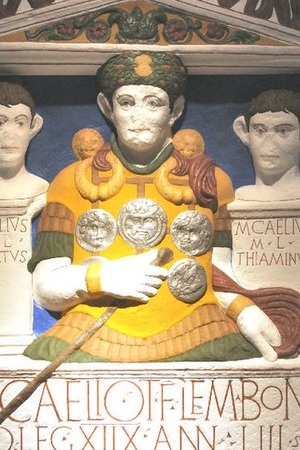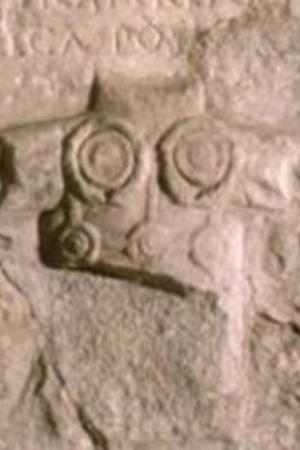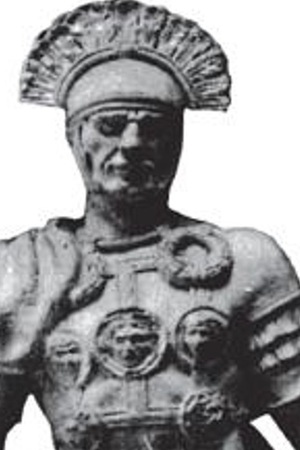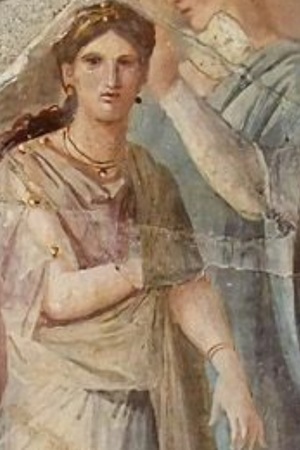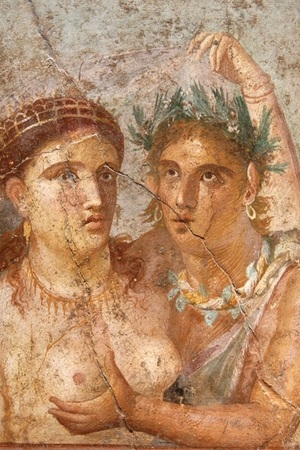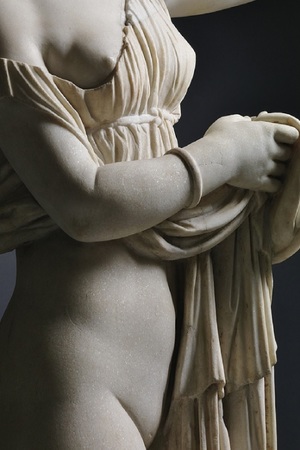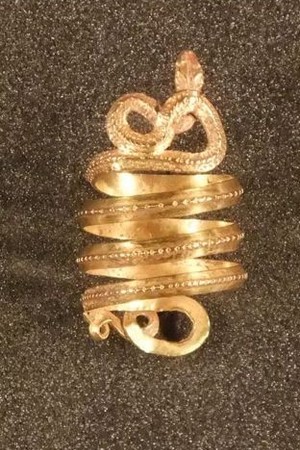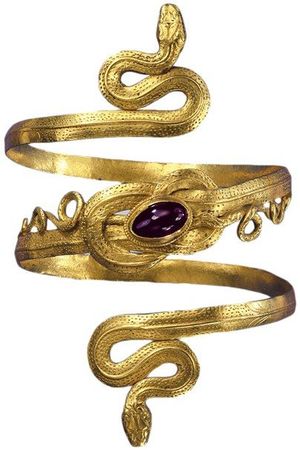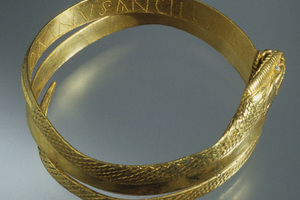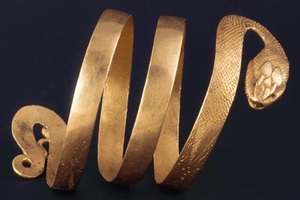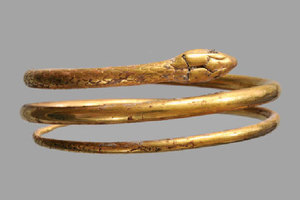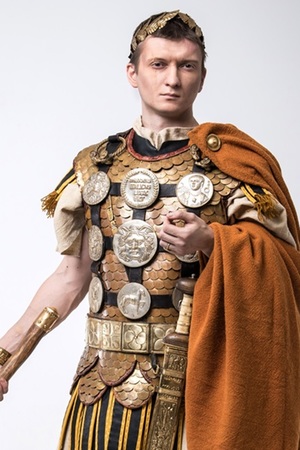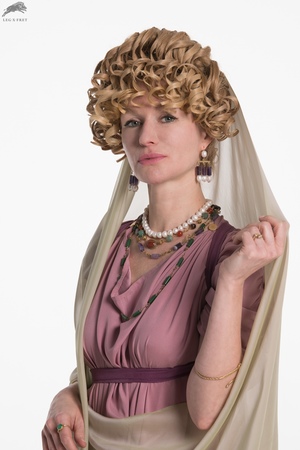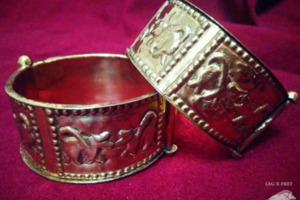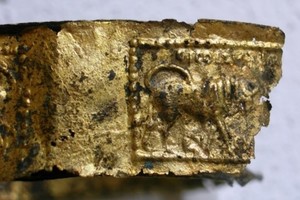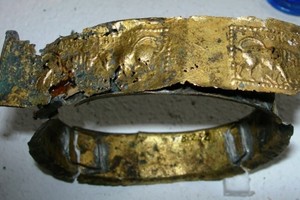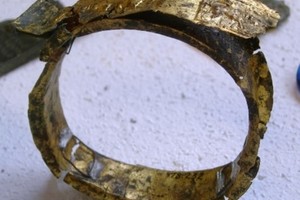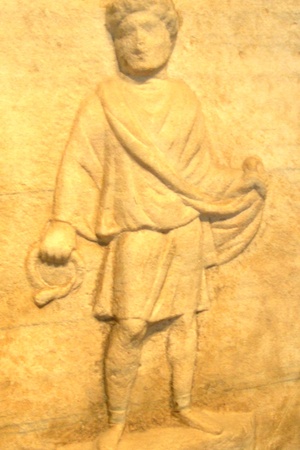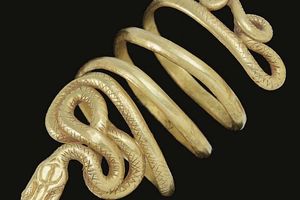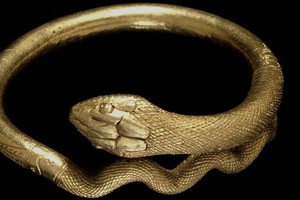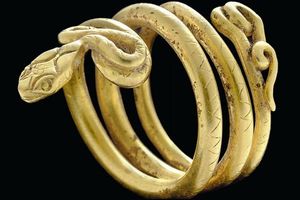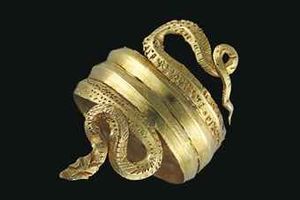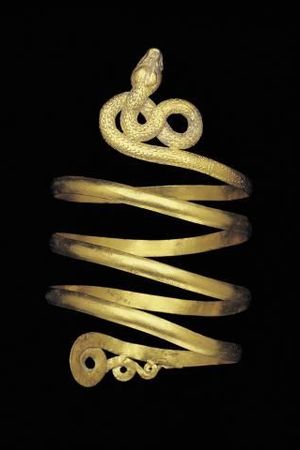Armillae
Armillae (Latin: armillae, from armus - "forearm") were a type of wrist adornments in ancient Rome. Depending on the design, they could be worn on the wrists, upper arms, or together with phalerae on the chests of centurions. The fact that both military and women's armillae are called the same is explained by their origin from the word "armus" (forearm), not "arma" (weapon). In other words, armilla refers to anything hanging on the forearm.
Armillae in the Military
Armillae were actively used as decorations or distinguishing marks in the Roman army and were most commonly worn on the wrists. In terms of shape, armillae resembled traditional Celtic ornaments (torques) or were made as flat elongated hoops, sometimes consisting of segments.
Centurions, in addition to their set of phalerae, also had armillae, which were placed higher up. They were either attached to the leather base of the phalerae, worn over the cloak, or separately fastened with a special scarf. Armillae were made of colored metals such as bronze, silver, and gold. They often featured patterns, were twisted, and adorned with animal heads at the ends. They were worn in pairs, and they could be attached as a separate element or directly onto one of the phalerae, "sliding" onto it. A centurion could also wear armillae simultaneously on the wrists and phalerae.
Armillae for Women
Women in ancient Rome also used armillae as ornaments to showcase their social status. They wore them more often on the shoulder area of the arm rather than the wrists. Wealthy women would wear several bracelets on one arm. The ways of wearing and the fact that this type of armilla was for women are indicated by surviving pictorial sources such as frescoes and statues.
The most popular type of armilla was the snake-like variety, coiling around the arm in one or several loops. Such bracelets were borrowed from Greco-Etruscan culture in Rome. Occasionally, they were adorned with precious gemstones.
In Rome, armillae bracelets became fashionable among various social classes. They were beloved by both aristocratic women and female slaves. In Pompeii, near Mogerinum, a golden armilla with the inscription "dominus ancillae suae" - "from the master to his slave" was found, which essentially meant a valuable gift to a concubine. While in Ancient Greece, the snake was a symbol of Hermes and Asclepius, in Rome, it was primarily associated with Apollo. It was believed that the snake bestowed beauty, health, sexual attractiveness, and strength upon its wearer.
Reenaction
For armilla reenaction, it is recommended to use brass or other precious metals. Silver-plating or gold-plating is permissible. It is especially relevant for women's attire to use armillae for wearing on the shoulders and wrists. Centurions can wear bracelets on their phalerae and wrists.
Related topics
Women in Ancient Rome, Legionnaire, Centurion, Falers

 Military Armylls
Military Armylls







 Women's Armillae
Women's Armillae






